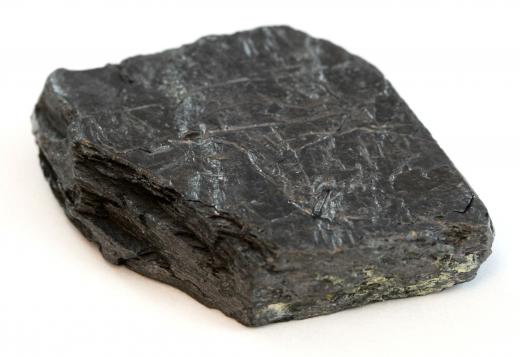What are the Properties of Carbon?
 Mary Elizabeth
Mary Elizabeth
Carbon is an element. It is found in bulk, both by itself, in its allotropes, and as a constituent of other widely occurring substances, including limestone, coal, and petroleum. It occurs in a number of inorganic compounds and all organic compounds. To understand both how carbon acts and how it interacts with other elements, it is important to understand the properties of carbon.
Carbon’s symbol in the periodic table is “C.” It is in period 2, along with lithium, beryllium, boron, nitrogen, oxygen, fluorine, and neon, and in group 4a or group 14, depending on the system, with silicon, germanium, tin, and lead. The properties of carbon include an atomic number of 6, and atomic mass of 12.011 g.mol-1, a melting point of 6332ºF (3500ºC; 3773K) and a boiling point of 8721º F (4827ºC; 5100K). Carbon scores 0.5 on the Mohs scale of mineral hardness. In a human being weighing about 154 lb (about 70 kg), the average total mass of carbon is about 35 ¼ lb (about 16 kg).

The fact that it has quite different allotropes, or different manifestations of the same element with different molecular structures, are one of the interesting properties of carbon. Graphite, one allotrope, is used to make pencil “lead,” as well as in generators and electric motors. A second allotrope of carbon is the diamond, and a diamond has an absolute score of 1500 on the Mohs scale of mineral hardness, showing how the properties of carbon can differ dramatically. Another allotrope, buckminsterfullerene, discovered in 1985 by American and British researchers, has a shape similar to a geodesic dome designed by engineer R. Buckminster Fuller, hence its name.

Among the properties of carbon, the predictable decay of the carbon-14 isotope has been found to be of particular use in dating biological materials. A living organism incorporates a predictable proportion of carbon 12 in relation to carbon-14, which it gets from the atmosphere. When the organism dies, new carbon is no longer taken in, and the ratio between carbon-12 and carbon-14 begins to change, with the carbon-14’s decay to nitrogen-14. This allows radiocarbon dating based on the 5730-year half-life of carbon-14. Although several situations, such as contamination with carbon from soil and fluctuating amounts of carbon-12 and carbon-14 in the atmosphere, may throw off the calculations, radiocarbon dating has still been found to be useful.
AS FEATURED ON:
AS FEATURED ON:














Discuss this Article
Post your comments